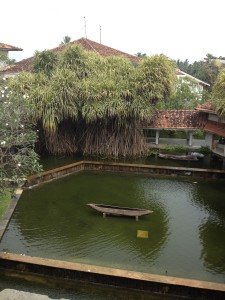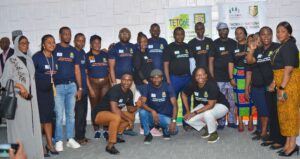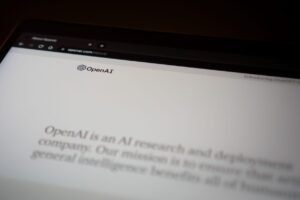Three encounters with medical journal editors
In July I was invited to give a talk at a medical writing workshop in Bangalore organized by The BMJ. It was the first of my interesting encounters with medical journal editors this year. The workshop was held at Bangalore Baptist Hospital for about 100 medical doctors and most of them appeared to be students and young clinicians.
My talk was based on an article I wrote last year for SciDev.Net on how to target a suitable journal. Before my talk I got to attend a session led by Dr. Amar Jesani, who is the editor of the Indian Journal of Medical Ethics. Unsurprisingly, the focus of Dr. Jesani’s talk was publication ethics. He presented intricate examples of scientific fraud and explained how journal editors have to always be alert these days. The questions from the audience indicated that many of them had no idea that publication ethics was such a big issue. But it was also the elephant in the room, I thought. Dr. Jesani however minced no words in condemning ethical violations and urged everyone at the workshop to work and write ethically.
The theme of publication ethics resurfaced at the 1st conference of the World Association of Medical Editors (WAME), held in New Delhi in early October. WAME was formed in 1995 and has nearly 2000 members, with a large representation from developing countries.
I’ve been a member of WAME since 2012 and have learnt immensely from the discussions on the WAME email list. So when I heard about the WAME conference that was to take place in India, where I live, I was one of the first to sign up. I went to the conference with a poster about INASP’s partnership with a research centre within the medical school at the University of Colombo. This blog post by Jocalyn Clark mentions some key issues discussed at the conference, and I made a Storify of some WAME posters.
For me one of the high points of the conference came at the end: there was a rousing keynote address by Dr. Hoomen Momen on how well medical journals are addressing the most important health problems in the world. The gist of his talk was that a lot more needs to be done in an environment where medical journal editors are often preoccupied with matters such as getting indexed, getting and growing an impact factor, etc. But Dr. Rod Rohrich, a WAME leader, had earlier spoken about how medical editing is many things: a science, a service, and a business (at least when editing is seen in the context of publishing).
There were arguments to sway people in different directions, but I left with a sort of neutral point of view, which I think helps for the work I do as an AuthorAID trainer. It also helped for my next encounter with medical journal editors — near Colombo in Sri Lanka.
Near the end of November, a two-day workshop on international publishing standards was organized by the Sri Lanka College of Paediatricians for medical journal editors in Sri Lanka. My colleague Andy Nobes who is connected to INASP’s Journals Online project will soon be writing a detailed post about this workshop, so here I’ll write about what I learnt from the workshop wearing my hat as an AuthorAID trainer, or as someone who works primarily with researchers in developing countries.
One of the biggest challenges faced by journal editors in Sri Lanka, I came to know, was getting articles from authors. Many Sri Lankan journals apparently do not publish enough articles to qualify for indexing, and indexing is key to growth and even survival. For medical journals, getting indexed in PubMed is especially important but this is not easy (though it is apparently easier than getting an impact factor). Currently only one medical journal in Sri Lanka, the Ceylon Medical Journal, is indexed in PubMed. The editor of another Sri Lankan journal spoke about his experience getting rejected twice by PubMed over a five-year period, but the second time he was encouraged to apply again.
Why is indexing important? A journal that is indexed in respected academic databases such as PubMed is considered prestigious. A study published in JAMA found that a journal’s prestige was the most important factor among the surveyed authors in selecting a target journal. Although this study was published in 1994 and included researchers at only one American university, it could be somewhat true across the world. Over the past five years I have met researchers in several developing countries, and they often rely heavily (too heavily in fact) on the impact factor – perhaps the most popular “prestige metric” – while identifying suitable target journals.
So it can be a vicious cycle for journals in developing countries: because they’re not indexed they don’t attract enough submissions, and because they don’t publish enough they’re not indexed. For authors it is “publish or perish”. A corollary for journal editors is perhaps “get indexed or perish”!
Incidentally when I was in Colombo I came to know of a new critical literature review on the problems faced by “peripheral scholarly journals”.
On the second day of the workshop I gave a talk on how Sri Lankan medical journals could connect better with authors. I proposed the implementation of an online learning platform that would be open to all medical researchers and journal editors in Sri Lanka, on which there would be courses in scientific writing, communities of practice, etc. The idea was that such a platform might encourage Sri Lankan authors and journal editors to be part of a single community rather than separate communities. Journal editors are well placed to train authors on how to write well and to lead discussions on increasing the impact of medical research in a local or national context. By doing this I imagine they would also increase the visibility of their work and their journals – and perhaps get more of the high-quality submissions that they acutely need?
At INASP we are supporting our institutional partners in implementing and using Moodle, an open-source online-learning platform. We ourselves have been using INASP Moodle for more than three years and have found this platform to be valuable for our training and capacity-building initiatives. I must add a disclaimer that I’m a “Moodler” and I always like to spot opportunities to use Moodle!
As this year comes to an end, I’m more convinced than ever that it is critical to bring together journal editors and researchers in developing countries to address and overcome what are essentially common or related challenges. Only then can research play a bigger role in national development. Otherwise there’s a real risk that the research endeavour will continue to be dominated by the “get indexed or perish” and “publish or perish” narratives. We actually need to bring together even more actors in the research ecosystem, as Sue Corbett has explained in her recent posts on the wisdom of crowds. Hopefully 2016 will be a year when we see a more collective effort to make research work for development.








